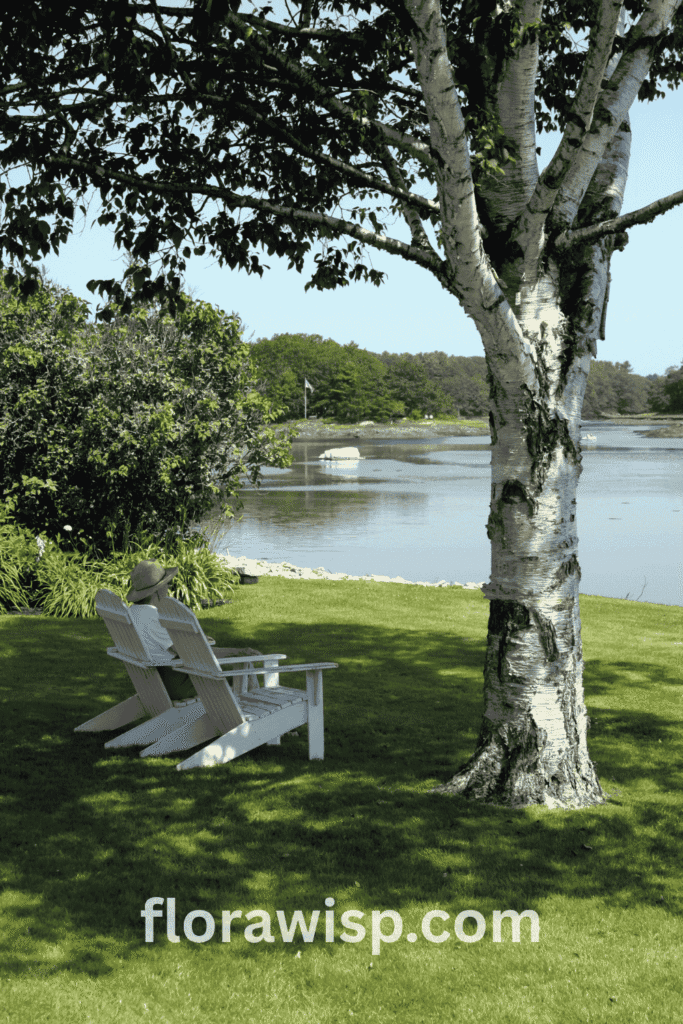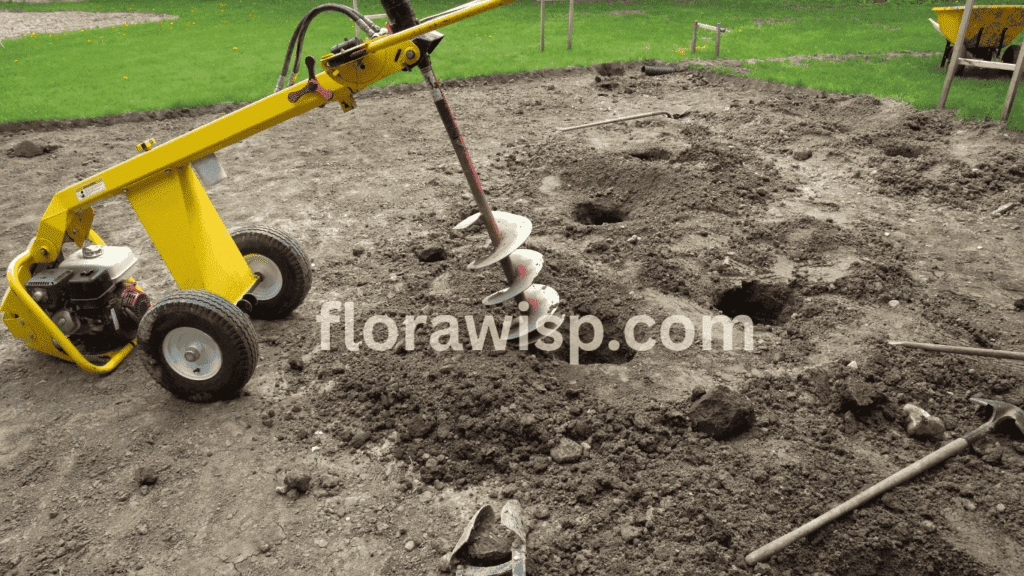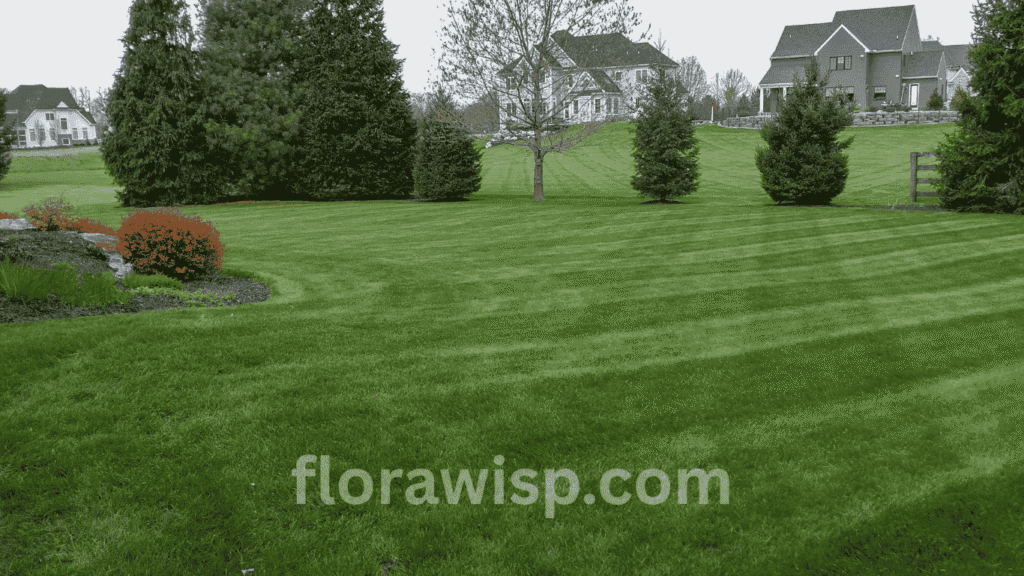St Augustine grass is a thick, warm-season turf ideal for sun and shade. Learn how to plant, care, and avoid mistakes to grow a lush lawn that lasts. Whether you’re planning a new lawn installation or upgrading patchy turf, this warm-season grass brings beauty and resilience with minimal effort. Over the years, I’ve helped countless homeowners establish thriving lawns with St Augustine especially in regions like Texas, Florida, and Georgia where heat and humidity demand tough performers. This guide brings together all the must-know tips from preparation and planting to purchasing and maintaining.
In This Article
In this article, you’ll get hands-on strategies for growing, installing, and buying St Augustine grass, along with answers to common questions that’ll help you avoid costly mistakes. If you’re serious about transforming your outdoor space into a vibrant, easy-care lawn, keep reading this is the complete roadmap you need. And if you’ve ever faced issues like thinning patches, yellowing blades, or poor growth, don’t miss our guide on St Augustine Grass Problems to troubleshoot like a pro.
What is St Augustine Grass?
St Augustine grass is a dense, fast-establishing warm-season turfgrass prized for its lush texture and ability to handle heat, humidity, and moderate shade. Native to coastal regions, it’s the go-to choice for homeowners across the Southern U.S. looking for a low-maintenance yet visually striking lawn.
What Does St Augustine Grass Look Like?

Its blades are wide and flat, with a slightly coarse texture and rich green to blue-green coloration depending on the cultivar. Unlike finer grasses like Bermuda, St Augustine offers a soft cushion underfoot and a full, carpet-like appearance that enhances curb appeal. I often describe it to clients as the “tropical thick blanket” of lawn grasses especially when kept at the recommended mowing height of 3.5 inches.
Why St Augustine Grass Is Ideal for Warm-Season Lawns
This grass thrives in temperatures between 80°F and 100°F and performs exceptionally well in sandy or loamy soils. It also handles coastal salinity better than many other grasses, making it perfect for beachside or humid environments. From years of working with lawns in Florida and Texas, I can confidently say it withstands drought stress well when watered consistently about 1 to 1.5 inches per week.
CitraBlue St Augustine Grass: A Top Cultivar
When choosing a variety, CitraBlue St Augustine grass stands out for several reasons: its deep blue-green color, compact growth, excellent shade performance, and superior disease resistance. I’ve personally found CitraBlue to maintain its lush appearance even in challenging spots like under tree canopies or near shaded fences where other varieties often thin out or discolor.
How Does St Augustine Grass Spread?
St Augustine grass spreads through stolons above-ground runners that root at the nodes. These stolons creep horizontally, forming dense coverage that chokes out weeds. On average, healthy grass spreads 1–2 inches per week in warm weather.
Its spreading habit makes it perfect for filling gaps or patchy areas naturally over time. When maintained well, your lawn gains a uniform, lush appearance without reseeding.
Conditions That Speed Up St Augustine Grass Spread
- Warm soil: Ideal growth occurs when soil temperatures stay above 75°F
- Consistent moisture: Water deeply 2–3 times per week to encourage stolon rooting
- Fertilization: Apply a nitrogen-rich fertilizer every 6–8 weeks during growing season
- Proper mowing: Maintain a height of 3.5–4 inches to support thick lateral growth
- Good soil health: Loosen compacted soil and add compost to improve drainage and root expansion
- Sunlight: Ensure the lawn receives at least 6 hours of direct sun daily for vigorous spreading
Plugging vs Sodding: Which Is Faster?

Sod St Augustine grass offers instant coverage but comes with a higher cost. It’s ideal if you need immediate results like prepping for a home sale or repairing storm damage.
Plugging St Augustine grass is more affordable and allows gradual establishment. I often space plugs of St Augustine grass about 12 inches apart, and with proper care, they knit together within 6–10 weeks.
Both methods work well. If you’re on a budget, plugging is smart. If time is critical, sodding gets the job done fast.
How to Grow St Augustine Grass (Step-by-Step Guide)
1. Prepare the Soil Based on Its Type
Growing St Augustine grass starts with understanding your soil. Whether you’re working with sandy or clay soils, preparation is key to long-term success. Begin by removing all existing grass, weeds, and debris from the area. Then till the soil 4–6 inches deep and mix in organic compost to improve structure and drainage.
2. Soil Amendments for Sandy or Clay Lawns
For sandy soils, add organic matter like peat moss or aged manure to boost moisture retention. In contrast, clay-heavy soils benefit from coarse sand or gypsum to break up compaction and allow roots to spread easily.
3. Choose Between Sod, Plugs, or Certified Seed
Once your soil is prepped, choose your planting method. You can either lay sod, plant plugs, or if available try certified seed. I usually recommend plugs of St Augustine grass for DIY homeowners. They’re affordable and ideal for lawns under 2,000 sq ft. Space them 12 inches apart for quicker fill-in and water immediately after planting.
4. Plant During Optimal Seasonal Conditions
The best time to plant is late spring to early summer, when soil temps stay above 65°F and air temperatures hover around 80–90°F. At these temps, the stolons (above-ground stems) spread vigorously, helping establish a dense lawn.
5. Water Properly and Begin Gentle Mowing
For optimal growth, keep the lawn consistently moist for the first 2–3 weeks. Avoid heavy foot traffic during this period. Once the grass reaches about 3.5 inches, begin mowing gently to encourage horizontal spread.
6. Expect Visible Results Within 8–10 Weeks
In my experience, newly planted lawns can achieve 80% coverage in 8–10 weeks if you follow the right steps from day one.
Does St Augustine Grass Grow in Shade?

While St Augustine grass thrives best in full sun, it can still perform well in partial shade if you choose the right cultivar. Most varieties need at least 6–8 hours of sunlight, but newer types like CitraBlue and Palmetto have been specially bred for better shade performance. According to the University of Florida, CitraBlue can grow with as little as 4–5 hours of filtered sunlight daily, making it one of the top choices for shaded lawns.
Real-World Shade Success with CitraBlue
From my experience, I’ve helped homeowners establish thriving CitraBlue lawns under mature live oaks and around privacy fences where other grasses failed. The key? Filtered sunlight, not total darkness. These shaded lawns remained green and dense, even with limited light, because we avoided overwatering and followed a smart maintenance routine.
Tips for Growing St Augustine Grass in Partial Shade
- Choose a shade-tolerant cultivar like CitraBlue or Palmetto
- Mow higher (around 4 inches) to increase leaf surface for photosynthesis
- Use a light nitrogen fertilizer tailored for shade once or twice per season
- Improve drainage to prevent fungal diseases
- Avoid thick mulch layers that trap moisture and block sunlight
Even in shaded areas, proper care and cultivar selection can result in a lush, healthy lawn without sacrificing beauty or durability.
How to Sod St Augustine Grass for a New Lawn
Sodding St Augustine grass offers an instant green lawn, but success depends heavily on proper prep. Start by clearing all old grass, weeds, and debris. Then till and level the soil, ensuring it’s loose and graded away from buildings. Before laying the sod, lightly water the soil, not soggy, just damp to help roots anchor faster.
Lay Like a Brick & Roll It In
Lay the sod St Augustine grass in a staggered brick pattern. This avoids straight lines that can dry out or shift. Press seams tightly together with no overlaps or gaps. I always recommend rolling the sod with a lawn roller after installation. It eliminates air pockets and improves soil contact critical for quick rooting.
Water Wisely & Feed at the Right Time
Water daily for the first 10–14 days. During a Texas summer, I advise watering early morning to avoid heat stress. Avoid mowing or foot traffic until you can’t pull up the sod easily usually by week 3. A starter fertilizer with phosphorus after the first week can boost root development by up to 25%, based on Texas A&M trials.
Common Mistakes to Avoid
- Installing sod over hard, dry soil
- Leaving gaps between sod pieces
- Skipping the rolling step
- Watering too little or too much
Sod vs. Seed: What’s Better for St Augustine?
Sodding is faster but pricier, averaging $0.50–$1 per sq ft including labor. Plugs or seed (where available) are cheaper, but take longer. I often recommend sodding for instant curb appeal, especially when flipping homes or prepping for family gatherings.
Plugging St Augustine Grass
Plugging St Augustine grass is an affordable way to grow a dense, green lawn especially for larger yards. Instead of sodding the entire area, you plant plugs of St Augustine grass (small turf chunks) in a grid. Over time, they spread and fill in. Homeowners can save up to 50% on costs compared to full sod installation.
Step-by-Step Guide for Plug Installation

Begin by clearing out weeds and loosening the top 2 to 4 inches of soil. I recommend placing plugs 12 inches apart in a checkerboard pattern. This layout ensures uniform spread and minimizes gaps. Water each plug area twice daily for the first 10 days to help roots establish.
My Experience with Tools and Timing
Using a plug auger drill bit speeds up planting and keeps depth consistent. I’ve also found that marking the layout with landscape flags before planting saves time and results in a neater finish. In my own lawn, I noticed full coverage in 6 to 10 weeks when I followed this method and applied light nitrogen fertilizer after 3 weeks.
When to Plug for Best Results
Late spring to early summer is ideal for growing St Augustine grass from plugs. Soil temperatures above 65°F stimulate fast rooting and lateral growth. With a little patience and care, plugs can fill out patchy areas beautifully without breaking the bank.
Can You Grow St Augustine Grass from Seed?
Technically, yes but it’s rarely recommended. St Augustine grass seed is difficult to germinate, and the results are often patchy.
Most homeowners opt for sod or plugs due to better success rates. If you insist on seed, make sure to buy certified cultivars and seed in early summer. From personal trials, seed germination is highly inconsistent unless soil and weather conditions are near perfect.
If cost is a concern, plugs provide a much more reliable and affordable way to establish a lawn.
Where to Buy St Augustine Grass
If you’re looking to buy St Augustine grass, you’ll find several options: seed, plugs, or sod depending on your budget, lawn size, and how fast you want results. Each option has its pros and costs, so it’s important to match it with your goals and climate.
Finding St Augustine grass seed for sale
You can find St Augustine grass for sale at sod farms, local garden centers, and big-box retailers like Home Depot or Lowe’s. Many online nurseries, including Sod Solutions, offer a pallet of St Augustine grass options delivered to your door. I personally prefer visiting local nurseries to inspect the grass. Healthy sod should be lush, moist, and free of brown spots or weeds.
Where to buy St Augustine grass (seed, plugs, sod)
It’s rare to buy St Augustine grass seed, as it’s not widely available or reliable for full lawn coverage. Plugs of St Augustine grass are a popular budget choice; they’re easier to plant and spread well in warm soil. For faster coverage, a pallet of St Augustine sod offers instant results, typically covering 400–500 square feet per pallet.
My Tip Before Purchase
Always ask if the sod is certified weed- and disease-free, and verify the cultivar like ‘Floratam’ or ‘Palmetto’ to ensure it suits your region. I’ve seen many homeowners overlook this and end up with mismatched or weak turf.
St Augustine Grass Price Breakdown (Plugs, Pallets, Seed)
Understanding the St Augustine grass price is essential before planning your lawn project. Whether you’re going for full sod, plugs, or rare seed, prices can vary based on region, supplier, and quality.
From my experience, local sod farms often give better rates especially if you’re buying more than one pallet of St Augustine grass. Below is a quick reference table to help estimate costs:
| Type | Average Price | Coverage | Notes & Tips |
| Plugs of St Augustine | $30–$50 per tray | ~80 sq ft per tray | Great for patching or budget-friendly full lawn. Use a plug tool for efficiency. |
| Pallet of St Augustine | $150–$300 per pallet | ~450–500 sq ft per pallet | Check for weed-free certification. Bulk buying may save 15–20%. |
| St Augustine Grass Seed | $20–$40 per pound (rare availability) | Varies—low germination | Not commonly sold. If you find St Augustine grass seed for sale, inspect quality. |
| Sod Installation Labor | $0.50–$1.50 per sq ft (regional) | Based on yard size | Get quotes from at least 2–3 local professionals. |
Expert Tips to Save
If you’re planting a large yard, consider prepping your soil early. Adding compost and leveling can reduce post-installation costs. I often recommend sourcing from growers directly especially for sod to avoid retail markups. Just last summer, I helped a client save over $400 by ordering directly from a farm 20 miles out of town.
Also, plan your watering system and tools in advance these often sneak into your budget last minute but can add $100–$300 depending on setup.
St Augustine Grass Cultivars Worth Considering
Selecting the right cultivar impacts your lawn’s success. Here are top choices:
- CitraBlue: Excellent shade tolerance, vibrant color, low mowing
- Raleigh: Cold-hardy, popular in the Carolinas
- Floratam: Great for full sun, aggressive spreader
- Palmetto: Semi-dwarf variety, does well in partial shade
Your local extension office or nursery can help you choose based on soil and climate. I usually recommend CitraBlue in shaded or mixed-light lawns for its resilience and aesthetic.
Conclusion
Whether you’re buying sod, planting plugs, or just exploring your options, St Augustine grass remains one of the best choices for Southern lawns. Its lush growth, tolerance to heat, and pest resistance make it a smart long-term investment for any yard.
Based on years of hands-on experience, I recommend CitraBlue for shady areas, plugs for budget-conscious homeowners, and full sod for those seeking instant curb appeal. With the right care, your lawn will not only thrive but stand out in your neighborhood.
Choose the strategy that fits your goals, follow the seasonal care tips above, and enjoy the transformation. Your perfect St Augustine lawn is just a few smart steps away.
FAQs
Q. When is the best time to plant St. Augustine grass?
The best time to plant St. Augustine grass is in late spring through early summer, when soil temperatures consistently stay above 65°F. From my experience helping homeowners across the Southeast, planting during this warm window ensures faster root establishment and dense coverage before fall. Avoid planting too early or too late, as cold stress or poor rooting can lead to thinning or disease issues.
Q. What does St Augustine grass look like?
St Augustine grass has broad, flat blades with a coarse texture and a deep green color. It forms a dense, carpet-like lawn that feels soft underfoot. The thick growth habit helps choke out weeds and provides a lush, manicured appearance, making it a favorite among Southern homeowners.
Q. Does St Augustine grass grow well in shaded areas?
Yes, some cultivars like CitraBlue and Palmetto are designed to tolerate moderate shade. If your yard gets 4–6 hours of filtered sunlight, these varieties can thrive. Just be sure to avoid overwatering and mow slightly higher to support healthy growth in low-light conditions.
Q. How does St Augustine grass spread?
With proper care, St Augustine grass plugs typically fill in within 6 to 10 weeks during peak growing season. Warmer temperatures, consistent watering, and light fertilization can speed up the process. Plugging is ideal for those wanting to grow a lawn gradually at lower cost.
Q. Where can I buy St Augustine grass seed?
You can find St Augustine grass seed online through specialty retailers, though availability is limited. Most varieties are sold as plugs or sod due to poor seed germination. Check local nurseries or sod farms for better options and direct cultivar access.
Q. Is it better to use plugs or sod for a new St Augustine lawn?
Plugs are more affordable but take longer to fill in, while sod provides instant results. For small or budget-conscious projects, plugs work well. For immediate curb appeal, sod is the better choice. I often recommend plugs in spring and sod in early summer for best results.
Q. Where is the best place to buy St Augustine grass?
For quality and cultivar selection, local sod farms or trusted garden centers are your best bet. You can also order online from retailers like Sod Solutions or big box stores. Always ensure you’re getting certified, weed-free products with solid delivery support.
Sources
University of Florida IFAS Extension
Gardener, M.Sc. Horticulture
Elara Bennet is a gardening writer from Austin, TX, passionate about sustainable lawns and blooms. Read full bio →








